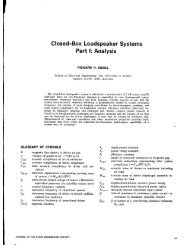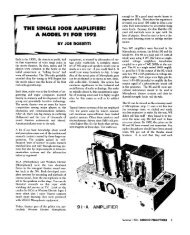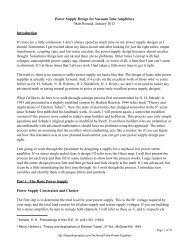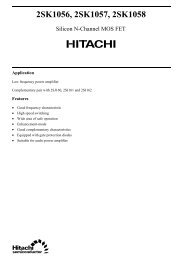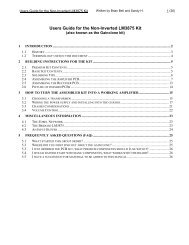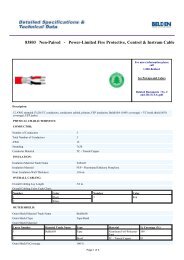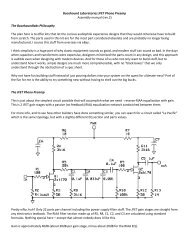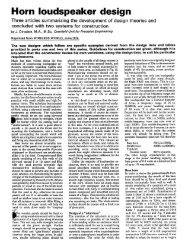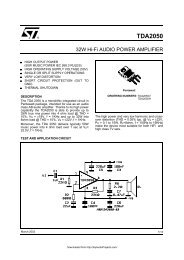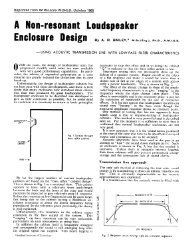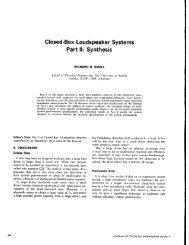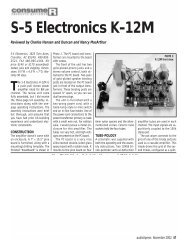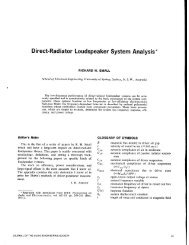A Model of Open-Baffle Loudspeakers - DIY Audio Projects
A Model of Open-Baffle Loudspeakers - DIY Audio Projects
A Model of Open-Baffle Loudspeakers - DIY Audio Projects
You also want an ePaper? Increase the reach of your titles
YUMPU automatically turns print PDFs into web optimized ePapers that Google loves.
a)<br />
/ Frequency/Hz<br />
0<br />
%<br />
a, b -50<br />
P<br />
8<br />
5<br />
g-100<br />
.-<br />
-0<br />
%<br />
E-150<br />
b)<br />
-200<br />
10’ lo2 -IO3 lo4<br />
Frequency/Hz<br />
Figure 8. Magnitude (a) <strong>of</strong> the sound pressure radiated by the front (solid) and rear (dashed) sides a<br />
speaker described by the equivalent circuit in Figure 7 and the phase difference between the front<br />
and the rear radiation (b). In this example the fundamental resonance is at 100 Hz and the chassis<br />
Hehnholtz resonance at 2 kHz.<br />
Using this kind <strong>of</strong> model the acoustical asymmetry can be regarded as a factor independent <strong>of</strong> the<br />
diffraction and the radiation. Thus impulse responses using an idealised source (with a flat response<br />
in the far-field on-axis in an infinite baffle) can be used to model the diffraction and the direct<br />
sound in the time domain, and the responses can then be transformed into frequency domain to be<br />
multiplied by the driver responses and finally to be added (Figure 9).<br />
11



